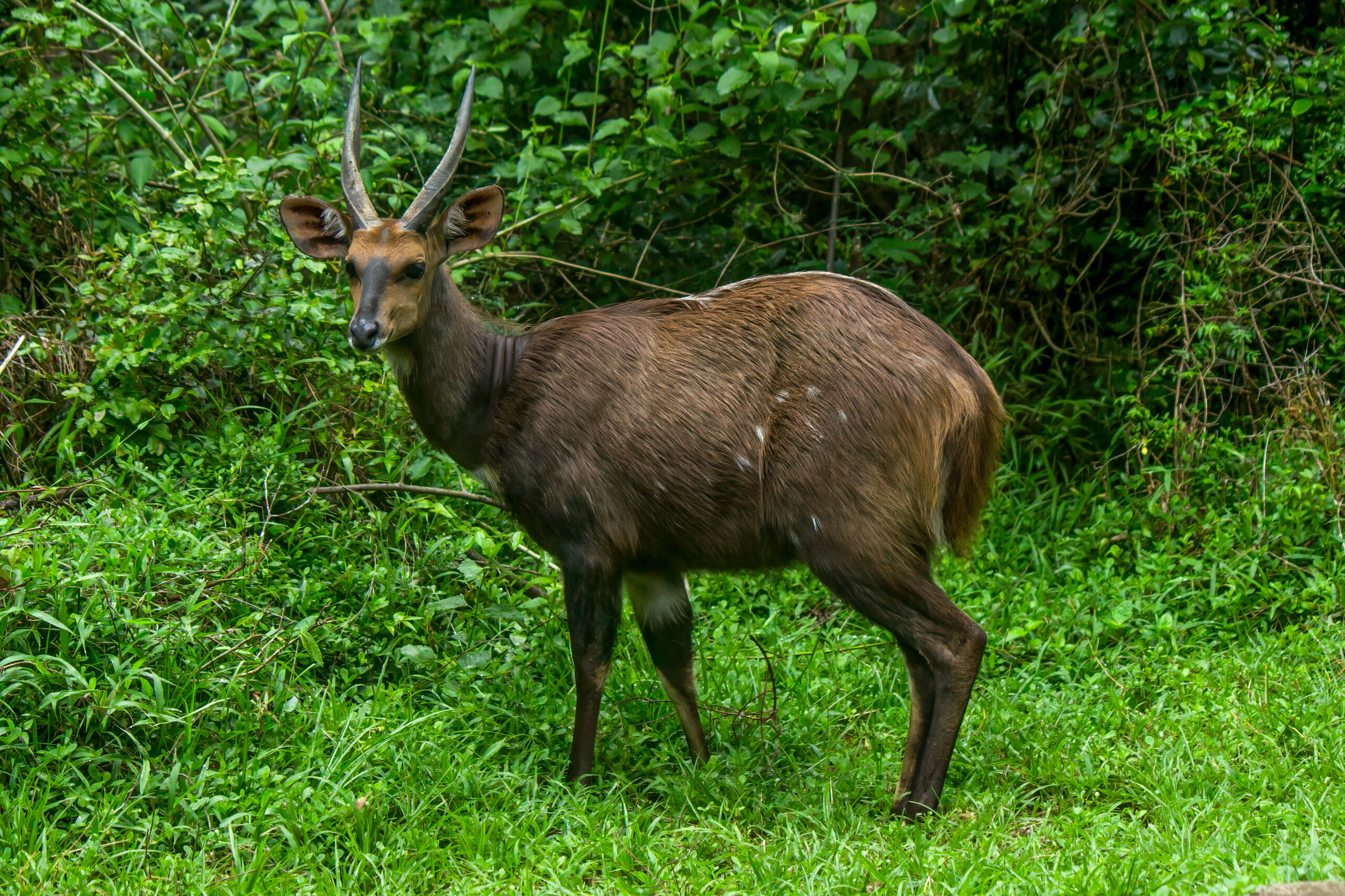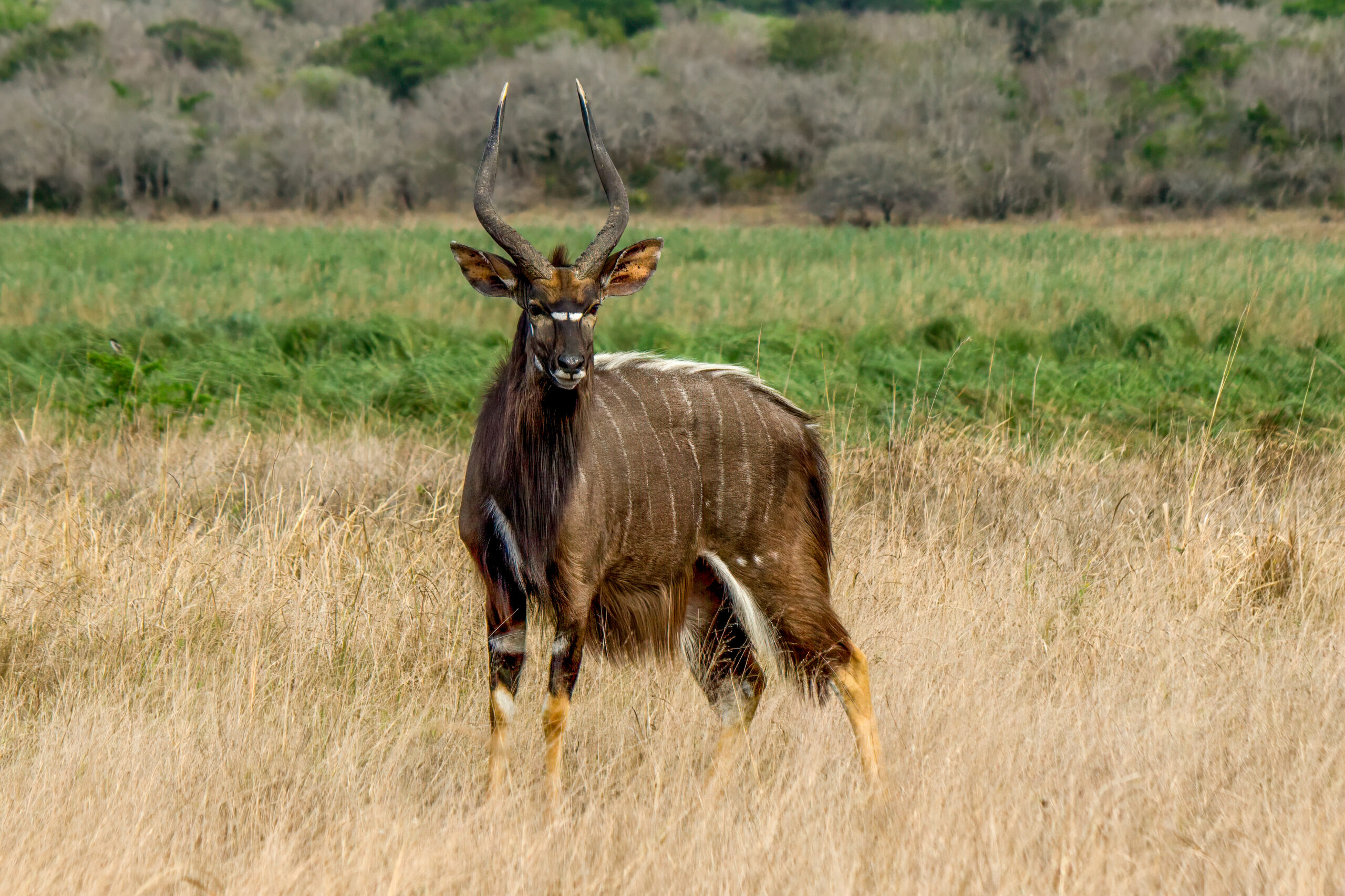Greater Kudu
(Tragelaphus strepsiceros)
Description
The greater kudu (Tragelaphus strepsiceros) is one of the largest species of antelope in Africa. It is the biggest of the two kudu species, with the other being the lesser kudu (Tragelaphus imberbis). Kudus are most famous for their large spiraling horns, which are found only on males in both species. The greater kudu male is much larger than the female and can stand as tall as 1.6 m (63 in) at the shoulder and weigh up to 270 kg (600 lb.). Females only reach 1 m (39 in) at the shoulder and weigh up to 210 kg (460 lb.). Both sexes have a white patch between the eyes, 4-12 vertical white stripes on the back and a coat that can be from grey or greyish blue to reddish brown. Apart from size and horns, males are the only sex to grow a mane down its frontside.
Diet & habitat
Greater kudus do not like open habitats and prefer thick and bushy vegetation, rocky hillsides, and woodlands. They are also highly dependent on water. Greater kudus are mixed feeders and will feed on leaves, shoots, roots, fruits as well as grass. They are most active in the early morning and late afternoon and will spend most of the hottest hours in the shade under trees and in forests. They will actively seek out water and do sometimes walk long distances to find a water source. They can also obtain water by eating roots and bulbs.
Social behavior
Greater kudus live in social groups. Females live in groups of 6-20 individuals, and young males often live in bachelor herds. Older males do sometimes join bachelor herds but will most often live alone, only to join with female herds during breeding season. You do get mixed herds with males and females, but those are only temporary and will split up with only females and young remaining as a core group.
Horns & fighting
The horn of the greater kudu is a commonly used symbol throughout Africa. The larger the horn the more dominant the bull. Because of the size and weight of the horn, kudu males grow big, thick, and muscular necks. A greater kudu horn on a fully grown male will spiral two and a half turn, and occasionally three. If straightened, a horn can measure 1.2 m (47 in). The record is 1.87 m (73.5 in). The males will use their horns to fight each other for dominance. Sometimes two bulls get locked together because the horns get entwined. When horns get locked in this way, they may not be able to free themselves and could eventually starve and die.
Reproduction
The mating season start at the end of the rainy season. Males will court the females through a ritual before being allowed to mate with her. After a gestation period of eight months, the female kudu will give birth to one, or rarely two, calves. The calf will stay hidden away for the first couple of weeks of its life, and after four or five weeks it will start walking with the herd in daytime. Males reach independence already after six months and females after 1-2 years. The horns of males will start growing between the age of 6-12 months and will reach its first twist after 2 years. The horns will reach their full length at around 6 years of age. Greater kudus have been known to survive for up to 20 years in captivity.
Predation
Greater kudus are preyed on by all the large carnivores, such as lion, leopard, wild dog, and hyena. Cheetah is not strong enough to take down a big male but will go for females or young. Greater kudus are not fast and nimble, and do not stand a chance to outrun most predators in an open landscape. They therefore rely on dense vegetation and their ability to leap through thick bush to escape predators. When running from predators they can jump over high obstacles and have been known to jump as high as 3.5 meters (11.48 ft) under stress.
Status
The greater kudu is listed as least concern on the IUCN Red List and the population is stable at present. It is still a targeted species for poachers as well as hunters, and its meat is common and legally found at stores for game meat. Some of its range has been lost to human disturbance, but some human activity, such as setting up wells and water sources in drier areas, has helped some wild greater kudu populations to extend their range.















